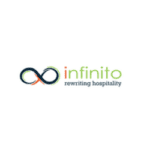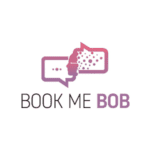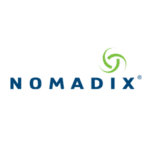 In the competitive landscape of today’s markets, effective pricing strategies are crucial for capturing consumer attention and driving sales. Leveraging psychological biases and tricks can profoundly influence consumer perception and behavior.
In the competitive landscape of today’s markets, effective pricing strategies are crucial for capturing consumer attention and driving sales. Leveraging psychological biases and tricks can profoundly influence consumer perception and behavior.
Here, I explore several proven pricing strategies that smartly use human psychology to enhance business success and give them a rating of 1 (bad) to 10 (good) as being successful in revenue management.
Here we go:
Charm pricing: the magic of “9”
Charm pricing is perhaps one of the most famous psychological pricing strategies, involving ending prices with the digit “9.” Despite its simplicity, the effectiveness of this strategy lies in its ability to position products as significantly cheaper than they actually are. For instance, pricing a product at $39.99 instead of $40 can make a substantial difference in consumer perception. This strategy plays on the left-digit effect, where the leftmost digit disproportionately affects our perception of price.
My Rating: 3/10: We just don’t do the 0.99 in rooms and even in F&B the .99 is a bit of a turnoff. Rounding to a nice especially 99, 199, 249 or 999 is a darling of the industry (just swap it with a 8 in Asia).
Decoy pricing: guiding consumer choice
Decoy pricing involves introducing a less attractive option to make other options seem more appealing. For example, a cinema might offer three popcorn sizes: small for $3, medium for $6.50, and large for $7. The medium size acts as a decoy, making the large look like a better deal because of its proximity in price. This strategy is particularly effective because it exploits the consumer’s tendency to compare prices and look for value in relative terms, not absolute.
My Rating: 10/10: Awesome in F&B Menu planning. Easy to implement. Works like a treat 😊 Correlation with bundling.
Anchoring effect: setting the price framework
The anchoring effect is a cognitive bias where an initial piece of information (the “anchor”) serves as a reference point for all subsequent decisions. In pricing, the first price a customer sees can set their expectations for the entire product category. For instance, presenting a high-priced item first can make all following prices seem more reasonable. Retailers can harness this by strategically placing premium products at the entrance of a store or at the top of a web page.
My Rating 7/10: Double edged sword as the reference price can lead to reduced conversion and more importantly at times the real price might be higher. Key here is to shift the focus to the product you want to sell, e.g. Special lunch in restaurant becomes even more interesting once you see the menu (so you want to sell the set special)
Exclusivity and scarcity: increasing perceived value
Creating a sense of exclusivity and scarcity can significantly enhance the perceived value of a product. Limited-time offers and limited-edition products provoke a fear of missing out (FOMO), pushing consumers towards making a purchase decision quicker than usual. This tactic is seen in flash sales or exclusive memberships offering special pricing, which not only boosts short-term sales but can also build long-term brand loyalty.
My Rating: 10/10: This stuff works. Yes, you might cringe over Flash Sales but they do work – but are only a one night stand – so treat it like one.
Bundle pricing: the illusion of savings
Bundle pricing is an effective strategy where multiple products are sold together at a price that seems lower than purchasing each item separately. This approach not only increases the perceived value but also reduces the pain of paying for each item individually. Consumers feel they are getting more for their money, which can lead to increased sales volume and quicker inventory turnover.
My Rating: 10/10: Correlated with decoy. Buy a toothbrush get a room. Breakfast for $1. Etc. All work, tested and tried.
Price lining: simplifying choice
Price lining is a strategy where products are grouped into predetermined price categories. This can simplify the buying process for customers by reducing the complexity of choices. By categorizing products into good, better, and best options, businesses can cater to different customer segments and maximize revenue across a broader audience.
My Rating: 1(0)/10: We just dont do that. We use Room type pricing and many times go nuts on the categories because it has a yellow ribbon on the door handle. Loads of work to be done here from simplification perspective. Hence a 1(0) – as simplification works, we are just bad at execution.
Psychological discounting: the thrill of a deal
Offering discounts can trigger the pleasure centers of the brain – Think sugar. A well-timed sale or discount, especially one that is unexpected, can create a strong emotional reaction and a sense of urgency to purchase. For example, a “buy one, get one free” offer can be more appealing than a half-price sale, even if the cost to the consumer is identical. This strategy plays on our intrinsic love for getting something extra for free.
My Rating: 5/10: It’s like trying to interrupt someone in a sentence, timed right, works like a treat, timed wrong and the get pissy. You got to hit the impulse moment. Now, another issue for hotels: What then? SO we give the offer, hit the moment, then ask for 38000 different fields to fill out so we can play together….no no.
Conclusion
You can do A LOT!!! And it is easier than you think. Yes, putting up your rates by a $1 here and there can make you go all woozy about yourself, but those are not game changers. Those are little optimizations that make the donkey run faster, but it doesn’t turn it into a racehorse. Those techniques will.

















